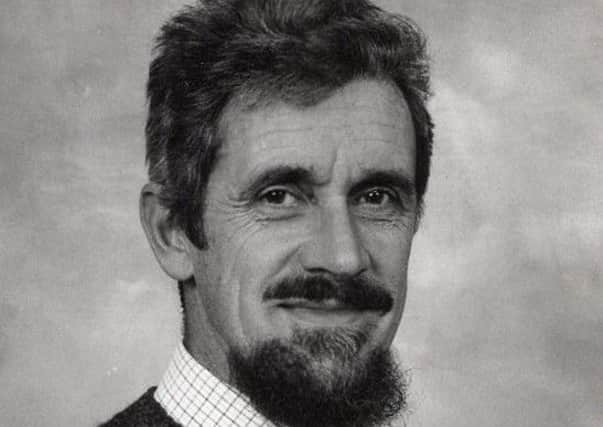Obituary: Lance Leonard Joseph Vick, theoretical and mathematical physicist, computer pioneer and amateur ornithologist


Lance Vick attended Oxted County Grammar School in Surrey and obtained a State Scholarship which took him to University College, London, where he studied physics, with mathematical physics as a speciality in third year, graduating with first class honours in 1960. He married Sally Ann Taylor, the girl next door (actually four doors away) from his home village of Blindley Heath, in September 1961, before embarking on a PhD in theoretical physics, also at UCL, under the supervision of Professor Jim Hamilton. He graduated in November 1963. His first appointment was as a research fellow at the Rutherford High Energy Laboratory, in Chilton, near Didcot, now the Rutherford Appleton Laboratory. His primary research interests were in the interactions of pions with protons and neutrons.
1964 saw the birth of their first child, Mary, who, tragically, was to die from cancer at the age of 20. In October 1964 Lance was appointed to a lectureship in mathematical physics at the Tait Institute of Mathematical Physics (now a part of the School of Physics & Astronomy) at the University of Edinburgh, where he was to remain for the rest of his career. Their second child, John, was born in Edinburgh in November 1965, shortly after the family’s move to Scotland, to be followed by daughter, Lucy, in 1968.
Advertisement
Hide AdAdvertisement
Hide AdLance was a major contributor to the development and teaching of the degree of BSc in Mathematical Physics and deserves great credit for the high reputation of that degree, both nationally and internationally. He also served for 13 years from 1968 to 1981 as Director of Studies, a role which enabled him to nurture the undergraduate careers of many of those graduating with a degree in Mathematical Physics, cohorts which include several distinguished theoretical physicists and at least two Vice Chancellors.
He helped to pioneer the use of computers and computer graphics to assist with the undergraduate teaching programme, using a Tektronix 4051 machine with a computing power laughable alongside modern smartphones or even digital watches.
Nevertheless, Lance was able to produce useful demonstration material on topics such as damped harmonic motion, motion under central forces and projectile trajectories.
The epithet ‘unsung hero’ characterised Lance’s time in the University. He was always willing to shoulder burdens that others found unpalatable or which encroached on the time available for research.
It came as no surprise, therefore, that Lance volunteered to take early retirement in 1997 under the so-called ‘New Blood’ scheme which was introduced by SHEFC to enable appointments of promising young people to the staff at a time of financial stringency and frozen posts. It may well have been experiencing the early symptoms of Parkinson’s disease, with which he was diagnosed in 1997, that affected his decision to retire. This appalling neurodegenerative condition played an increasing malevolent role in his life and that of Sally who became his devoted carer.
Lance was an accomplished amateur ornithologist, with a detailed knowledge of the bird life of the lagoons at Musselburgh, the Moorfoot Hills and their environs. For instance, his observations on ring ouzels were cited in a Cambridge PhD thesis by Ian Burfield, Global Science Coordinator of BirdLife International. When it came to Lance’s birding interests, he was very much an all-rounder. His acute observational skills in the field were used to good effect in many aspects of his hobby – counting, looking for migrants and rarities, ringing, studying breeding birds, nest finding etc.
When the Edinburgh Ringing Group was formed in the early 1970s, Lance was actively recruited due to his nest finding abilities which were exceptional. He was an active member of the Group from 1974 onwards, being listed as a member from its second year. He ringed extensively at Bawsinch and Hadfast (including staying overnight in his camper van).
In the 1970s, he wrote several articles for the Edinburgh Ringing Group report – subjects were Musselburgh Lagoons, Bawsinch, Stonechats in and around Edinburgh (this was when they bred in Holyrood Park), and breeding Dippers on the South Esk river system.
Advertisement
Hide AdAdvertisement
Hide AdHis extensive research on Wheatears in the Moorfoots was never published in full, but he contributed to Valerie Thom’s Birds in Scotland (1980), The Breeding Birds in SE Scotland (1998) and The Birds of Scotland (2007).
Lance diligently contributed his numerous observations to the local bird reports and his Wildfowl Counts for Musselburgh and the Moorfoot Reservoirs were submitted to the national scheme. His distinctive ‘LLJV’ initials made numerous and frequent appearances in every report. His last entries in the local recorder’s database are his wildfowl counts across the Edinburgh lochs in 2003.
Lance passed away on 17 May 2017 and in his final selfless act, donated his body to medical science. He is survived by his wife Sally, two of his children, John and Lucy, and four grandchildren, Robyn, Joe, Arwen and Iona.
Kenneth C Bowler